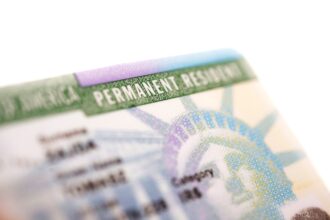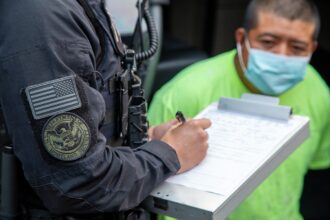Living without legal documents in the United States in 2025 carries increasingly severe risks. Customs and Border Protection (CBP) and the Department of Homeland Security (DHS) have stepped up their measures to curb irregular migration, especially under the new push for a mass deportation plan. Within this framework, authorities launched a campaign to warn about the legal, economic and immigration consequences faced by those who remain without legal status.
In addition, the use of the CBP Home application has been promoted, which allows migrants to initiate a voluntary departure process without judicial intervention, with the promise of better future conditions.
What consequences do they face?

1. Immediate and unannounced deportation
DHS may arrest persons in unlawful status without prior notification.
This prevents any preparation for their departure, which exacerbates the impact of deportation, especially on families.
Daily financial penalties
Under current regulations, a person with a final order of deportation who fails to leave the country may be fined up to $998 per day.
In addition, if you previously promised to leave and failed to do so, you may face additional charges of between $1,000 and $5,000.
3. Possible imprisonment
Those who disobey immigration orders risk being sent to prison.
In serious or repeat cases, this can include prolonged detention by Immigration and Customs Enforcement (ICE).
4. Barred from legal entry
Individuals who do not self-deport are automatically barred from legally entering the U.S. in the future.
This sanction may last between 5 and 10 years or even be permanent, depending on the case.
What are the benefits of self-deportation?

Although the term “self-deportation” is not legally recognized, authorities use it as a strategy to facilitate the voluntary departure of migrants without them facing arrest or prosecution.
Benefits include:
Decide when and how to leave the country.
Keep the money earned, provided there are no prior offenses.
Increased likelihood of returning legally in the future.
Access to government-funded flights, if travel is unaffordable.
El DHS puede arrestar a personas en situación irregular sin notificación previa
Self-deportation and voluntary departure

Both alternatives allow you to leave the country without a formal deportation order, but they are not the same:
Self-deportation: This is done directly through the CBP Home app, without the intervention of an immigration judge.
Voluntary departure: It is requested before a judge in the middle of legal proceedings.
It can be processed at the beginning of the case or after a judgment, although the latter option is more complex.
Both options offer the possibility of legal return in the future, something that does not occur with forced deportation.
How to use CBP Home for self-deportation

The CBP Home application, available in Spanish, replaced CBP One and offers a faster and safer way to leave the U.S. voluntarily.
The process includes:
Access the “Outgoing Traveler” section.
Upload a photo and complete the form.
Indicate if you have a valid passport and funds to travel.
Send the application and wait for the system instructions.
In addition, CBP Home allows you to perform other immigration procedures, such as managing the I-94 form, verifying border wait times, and more.
For more information, visit QuéOnnda.com.






















